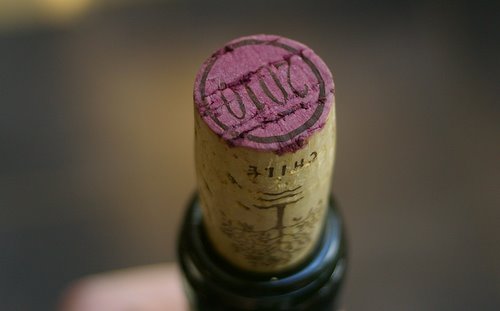Had another corked wine. I say ‘another’, but actually, it’s the first in ages. I wonder whether it’s getting rarer? Or maybe, it’s because many wines I drink are sealed with alternative closures or treated technical corks such as Diam?
Once again, this corked wine has some large, deep lenticels on the wine-facing end. I’ve wondered before about whether there might be a correlation with lenticels and taint, because these are the gas exchange pores in the bark that will inevitably be colonized by fungi and bacteria.
There is an AWRI (Australian Wine Research Institute) study that looked at where the taint is found in corks. They concluded that because most is found on the exterior surfaces, the taint molecule TCA is being produced after cork punching. But they looked at a batch of cork with unusually high levels of taint. For less tainted batches, could the lenticels still be correlated with taint?
If so, it would be pretty much impossible to have 100% zero TCA contamination of corks.
4 Comments on Corked wine, and some dodgy lenticels


It would certainly explain why there was so much lower incidence of cork taint in the very high grade cork that was being supplied to the Bordelais etc…
Jamie,
I think that there is definitely a lower incidence of TCA in natural cork. We still find an occasional hit but the quality producers we source appear to have reduced taint to less than 1%. Sorry you were unlucky enough to find one. I don’t know about the lenticels. When I was tasting a large number of corks, some with a lot of imperfections would have the most neutral of flavors, so I learned that I could not judge cork flavor by appearances. If we look hard enough we can find tiny amounts of TCA in nearly every cork, albiet orders of magnitude below sensory threshold.
Regarding Diam, we have found that they actually remove TCA from wine. One of my projects for this year is to try to get some quantification on this phenomena.
I judge a number of American wine competitions and find that the number of corked wines has dropped in recent years. At its worst we were finding 5 or 6% of the wines corked. At the recent 2012 S F Chronicle Competition our panel judged 450 wines (in 3 days) and only had 3 corked wines.
I’m sitting here with three corks lined up on the laptop, all from a 2008 vintage of high-end South African Cabernet Sauvignon. The first bottle was refined and sophisticated, and so good that we needed to open another… and that one was corked! So a third bottle has been opened – more savoury and more pronounced tannins. Of the three corks, the third has the deepest indentations and the cork from the tainted bottle has the smoothest face. Lenticels not correlated with taint here, then.